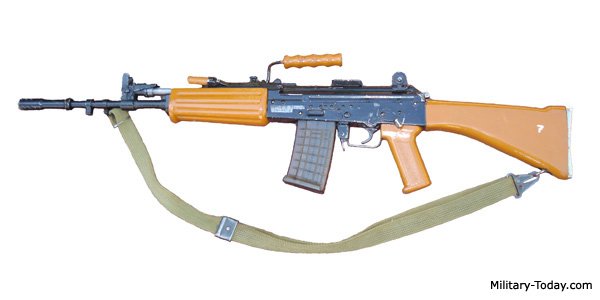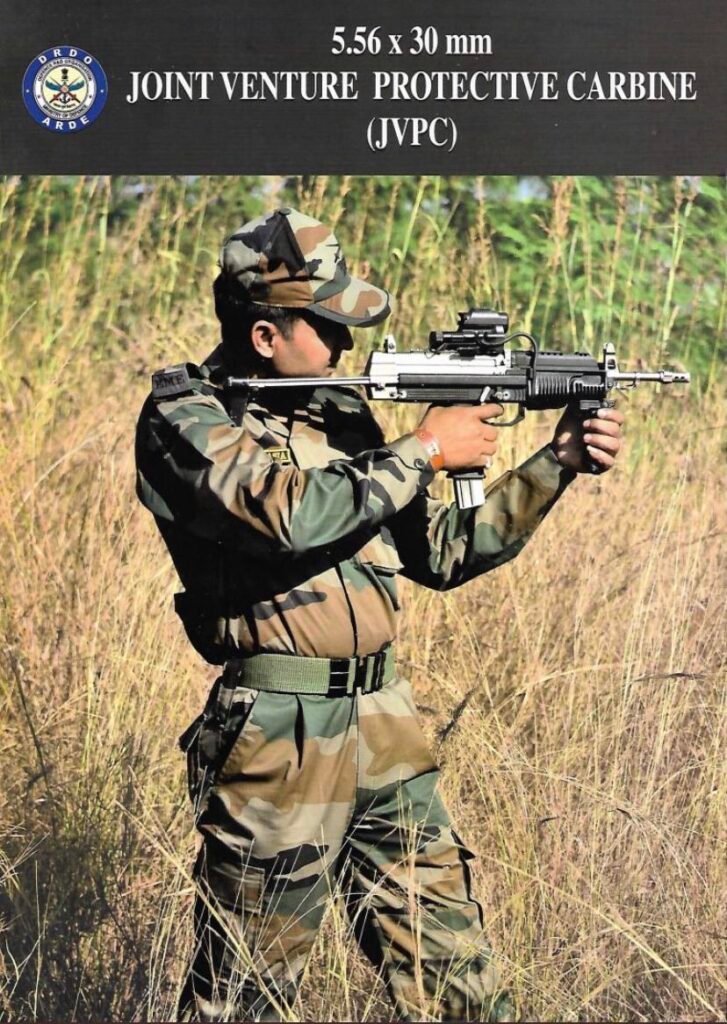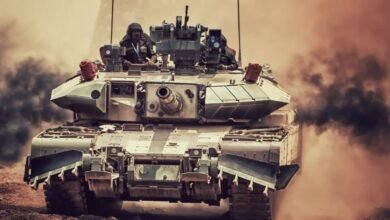Top 5 Indigenous Weapons Of The Indian Army

Hello defence lovers! In this article, we are going to discuss the top 5 indigenous weapons that are in the service of the Indian armed forces or will be in the coming years. We will only consider the weapons whose design is completely indigenous and not manufactured under license. So here are the top five Indigenous weapons.
INSAS Rifle
INSAS (INdian Small Arms System) is a family of infantry small arms consisting of an assault rifle version and a light machine gun (LMG) version. INSAS is manufactured by the Ordnance Factories Board at its several facilities such as Ordnance Factory Tiruchirappalli, Small Arms Factory Kanpur and Ishapore Arsenal. Currently, the INSAS assault rifle is the service rifle as well as the ceremonial rifle of the Indian Armed Forces.
INSAS was developed in the 1980s to phase out the outdated L1A1 rifles. Armament Research and Development Establishment (ARDE) examined several AKM type rifles and then it came up with its own design chambered in 5.56 ammunition. It was named INSAS. The rifle was adopted in the 1990s and went into mass production in the mid-90s. It is one of the most used Indigenous weapons. Over 7 lakh rifles have produced till this day.
INSAS didn’t have to wait long to prove itself on the battlefield. The 1999 Kargil war was a rigorous trial for the INSAS to prove its worth. However, the rifle failed miserably. Several complaints were received about this rifle. The chief problem was the absence of the full-automatic mode. It also jammed in the extreme climate of Kargil. The rifle had several issues which had to be resolved.
After many attempts of improvements, the army is till not very satisfied with the INSAS. It will be soon replace by AK 203. However it will be used by the police forces for at least one more decade.
OFB 12 Bore Pump Action Shotgun
OFB 12 bore pump-action shotgun is a 12 gauge shotgun developed and manufactured by the ordinance Factory Board of India. It is manufactured at the rifle factory Ishapore. It the is the standard shotgun of Indian army. It can accommodate 5 rounds maximum ( 4 in the magazine and one in the chamber). It has an effective range of about 50 meters. It is generally used to fire pellets to control mobs. Thus it is also known as the pellet gun. Other uses include breaching doors and close-quarter engagements. It is also used by many State police forces as well. It is also the only weapon on our list that is available in the civilian market as well.
Vidhwansak
Vidhwansak is a multi-calibre anti-materiel rifle or large-calibre sniper rifle manufactured by Ordnance Factory Tiruchirappalli. Vidhwansak means the “destructor” in Sanskrit. It can be used in the anti-materiel role for destroying enemy bunkers, lightly armoured vehicles, radar systems, communication equipment, parked aircraft, fuel storage facilities, and in many other versatile ways. It is also effective in long-range sniping, counter sniping and ordnance disposal roles.
Initially, it was developed as an indigenous option for the South African Daniel Anti-material rifle. It can fire three calibres 14.5x114mm, 12.7x108mm and 20x80mm. It has an effective firing range of 1,800 meters and weighs 25 kilograms. Indian Army and BSF use these rifles as their primary anti-material rifle.
JVPC
The Joint Venture Protective Carbine (JVPC), also called the Modern Sub Machine Carbine (MSMC), is a submachine gun designed by the Armament Research and Development Establishment (ARDE), manufactured by the Ordnance Factory Board at Small Arms Factory, Kanpur and Ordnance Factory Tiruchirappalli. JVPC was developed for the Indian Army, based on previous experience from the INSAS family of firearms. Its main objective was to phase out the outdated Sterling machine guns.
The JVPC was designed after the Indian Army’s disappointment with the performance of the Amogh carbine, a carbine version of the INSAS rifle, similar to the AK 74u. The JVPC was designed to overcome the shortcomings of previous developments.
Through extensive trials and improvements, ARDE came up with a grip-feeding, Uzi-like machine pistol design that shortened the length of the weapon, making it more suitable for close-quarters combat and counter-insurgency operations. Later on, its ergonomics were significantly improved, boosting its export potential. The JVPC claims to be capable of penetrating bullet-proof jackets.
It fires 5.56x30mm ammunition, which is completely unique for JVPC. It would have an effective range of 300 meters and would fire 800 rounds per minute. Although its unique ammunition will cause logistic problems.
ASMI
The Asmi pistol has been developed by Lt. Col prasad Bansod with the help of DRDO. This weapon was developed and designed in a record time of just 4 months!
Asmi stands for “pride, self-respect and hard work”. The 3D printing technology was extensively used for the production of the parts of this gun. It was first showcased in an exhibition recently.
The Asmi is chambered in 9×19mm parabellum, a cartridge which already in use with the Indian army and other security forces. It gives Asmi a major logistical advantage over the JVPC carbine, whose 5.56 rounds were purpose-built for the design.
Asmi weighs around 3 kg. It has a rate of fire of 600 rounds per minute. It has an effective round of 100m and would easily accept Glock-17 33-round box magazines.
The unit cost of Asmi would be roughly between 40000 to 50000 Indian rupees which makes it a much cheaper and affordable yet world-class. Similar weapons like the Heckler and Koch MP 5 and Bugger and Thomet MP9 which cost more than three times it’s expected cost. Thus it makes asmi perfect option for the replacement of British era Sterling and Sten submachine guns which are still in use with the security forces.
So these were the top five indigenous weapons. Indigenous small arms are one of the most important aspects of making India self-reliant in terms of defence technologies. The monopoly of OFBs over the small arms market must be ended to achieve better results. The need of the hour is to invest in more research and development of small arms to promote innovations.










